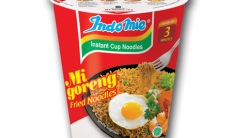The Gazette (Montreal), Canada
Expo hightex. Contending with low-cost imports
The Gazette
Published: 19 hours ago
The Canadian textile industry now has a road map with directions to its future in the changing world marketplace
It was introduced this week to about 900 industry leaders from around the globe attending the Expo Hightex 2014 showcase of innovations in Old Montreal.
“We’re just at the beginning of something exciting, a renaissance of the industry,” Sirio de Luca, head of the two-day event’s organizing committee, said on the closing day yesterday
A $320,000 study funded 70-30 by government and industry resulted in the Technology Roadmap, an 89-page document that makes recommendations on how to become more active in the value-added and technical textile sectors in order to position for growth.
The road map acknowledges globalization and trade agreements “have rocked the foundations of the world economy, forcing the Canadian textile industry to embark on a major restructuring of its offer.”
While previously directed at mass markets, Canadian manufacturers must now concentrate on finding new product and technology niches that will support their new developments to contend with imports from countries with lower labour costs.
“We’re moving away from commodity-driven apparel,” said de Luca, president and CEO of leading manufacturer of woven fabrics Consoltex Inc.
“Now we’re concentrating on technology,” he explained. “We want to establish ourselves as world leaders in technical textiles.”
Those textiles “are everywhere around you, but hidden and not obvious like clothing,” de Luca said.
Of the 428 companies active in textile materials production in Canada (251, or 59 per cent, are in Quebec), 241 are already in the technical textile sectors – 118 exclusively.
“This industry will survive,” de Luca stressed. “We have the ability to adapt.”
He noted 100 meetings were set up with international buyers and sellers Monday and yesterday with the goal of “matching end-users to see if any alliances can be formed.”
According to the Ottawa-based Canadian Textile Institute, total production domestically in 2014 was estimated at $5.7 billion and exports represented $2.7 billion, making it the country’s sixth- largest export industry.
The Canadian technical textiles market represents 23 per cent of industry sales, equating to $1.8 billion U.S. this year.
Textile manufacturers, which remain major employers accounting for more than 40,000 jobs, invested in excess of $4 billion from 1996 to 2005.
The road map was developed by Expo organizer CTTGroup (Centre des technologies textiles et géosynthétiques), which provides Canadian networking for international development.
For more information, visit www.textileroadmap.com
.





